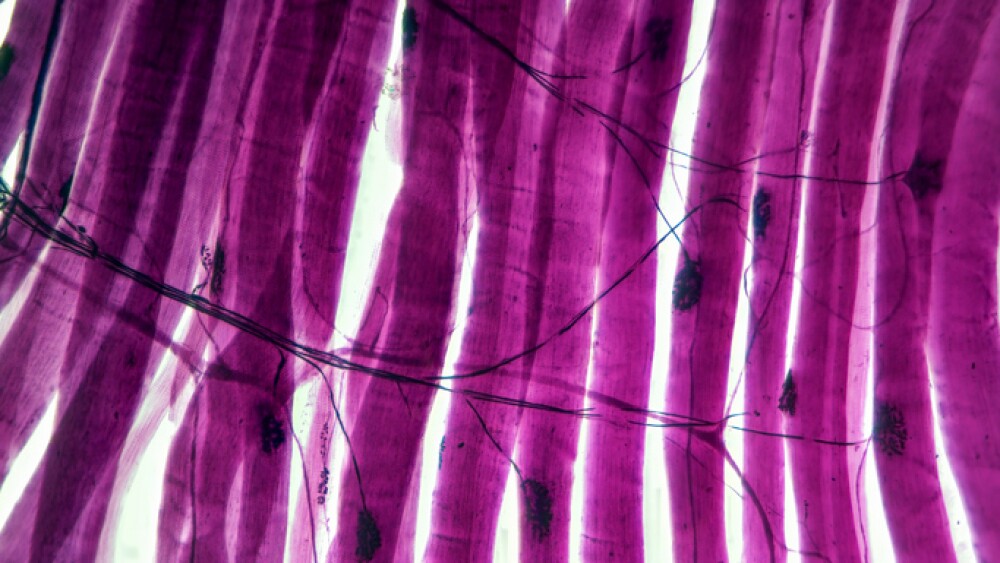In one of the first studies of healthcare resource utilization and costs for patients with rare disease, the EveryLife Foundation for Rare Diseases reveals that timely diagnosis and screening can shorten and possibly eliminate the diagnostic odyssey while significantly reducing the cost impact of rare disease for individuals, families, and the healthcare system.
Study Estimates Avoidable Costs Due to Delayed Diagnosis at Up To $517,000 Per Patient
WASHINGTON--(BUSINESS WIRE)-- In one of the first studies of healthcare resource utilization and costs for patients with rare disease, the EveryLife Foundation for Rare Diseases reveals that timely diagnosis and screening can shorten and possibly eliminate the diagnostic odyssey while significantly reducing the cost impact of rare disease for individuals, families, and the healthcare system. The report, entitled, “The Cost of Delayed Diagnosis in Rare Disease,” provides an in-depth analysis of the avoidable costs associated with seven rare diseases:
- Adrenoleukodystrophy (ALD)
- Duchenne muscular dystrophy (DMD)
- Fragile X syndrome (FXS)
- Generalized myasthenia gravis (gMG)
- Pompe disease (PD)
- Severe combined immunodeficiency disorder (SCID)
- Wilson disease
The study, which was presented at a September 14 briefing hosted by the Rare Disease Congressional Caucus, estimates the avoidable per patient medical costs and productivity losses attributable to delayed diagnosis of those seven rare diseases at between $86,000 and $517,000 per patient. The benefits of timely intervention are especially profound in diseases for which newborn screening has been implemented in some or all U.S. states, such as ALD, Pompe disease, and SCID. For these three rare diseases, timely diagnosis can eliminate the diagnostic odyssey and its associated medical costs and provide the opportunity for optimal intervention and improved health outcomes.
“The results of this study demonstrate the urgent need for faster and improved diagnostic strategies to help decrease the financial and personal impact of rare diseases on families and the healthcare system,” commented Annie Kennedy, Chief of Policy, Advocacy, and Patient Engagement at the EveryLife Foundation. “Timely diagnosis, using tools such as newborn screening and next-generation, evidence-based neonatal sequencing, is especially important when there are disease-altering or life-saving treatments available that can prevent irreversible disease progression and change outcomes.”
A recent white paper by the EveryLife Foundation entitled, “Pioneering the New Era of Newborn Screening” advocates for greater investment in these diagnostic resources that can yield significant economic benefits by reducing or eliminating unnecessary services or procedures while producing clinical and psychosocial benefits.
This new study on the Cost of Delayed Diagnosis is a follow-up to the landmark 2021 “National Economic Burden of Rare Disease Study,” which estimated that the economic impact of 379 rare diseases in 2019 was nearly $1 trillion, with 60% of those costs being shouldered directly by families and society. The 2021 study also noted that from the first appearance of symptoms it can take more than six years and as many as 17 clinical encounters before a person receives a definitive rare disease diagnosis. That finding was a major impetus for the new study, which showed that individuals whose diagnoses were delayed by an average of five years were approximately four times as likely to see three or more specialists as those with shorter diagnostic odysseys.
“Medical costs for rare diseases are inevitable, but avoidable costs from delayed diagnosis not only place financial strain on individuals and families but also divert crucial healthcare funds. These could be better used for treatments that enhance patient quality of life and boost workforce productivity,” stated Amy Brower, Ph.D., Director of Newborn Screening Translational Research Network at the American College of Medical Genetics and Genomics. “Timely diagnosis can lead to targeted therapy, surveillance for complications, and genetic counseling which can positively affect health outcomes, survival, and the overall healthcare system.”
The financial effects of receiving a delayed diagnosis were particularly acute among patients with ALD and DMD, as measured by direct medical costs, a category that includes inpatient hospital or outpatient care, emergency department visits, physician visits, prescription medications, and Medicaid-covered caregiver services. For patients with delayed diagnosis of ALD and DMD, the mean annual direct medical costs per patient were roughly twice as high in the year of diagnosis compared with those who received a timely diagnosis. For individuals with late onset Pompe disease, delayed diagnosis increased mean annual direct medical costs in the year of diagnosis by approximately $50,000 per patient compared with timely diagnosis.
The new report also documented the cost-saving benefits of early detection and newborn screening in diseases for which this life-saving intervention has been implemented (i.e., ALD, Pompe disease, and SCID). In the case of ALD, annualized per patient direct medical costs were nearly twice as low in the year of diagnosis and more than 10-fold lower per year post-diagnosis among those diagnosed in the first year of life compared with those diagnosed later. In contrast, in SCID, a disease with high mortality if not detected early, average annualized medical costs per patient in the year of diagnosis were more than two times higher among individuals diagnosed in the first year of life compared with those diagnosed at age 1 or older.
“For this study we chose seven diseases for which there is an existing path to diagnosis, but for the vast majority of rare conditions the search for answers goes on and on,” said Kennedy. “Therefore, the costs described in the study are gross underestimates for those who never reach the end of their diagnostic odyssey.”
The study also examined the impact of lost productivity related to time used for healthcare encounters on the seven rare diseases. In patients with FXS, for example, these cost categories were similar in the timely and delayed diagnosis groups. However, in FXS, caregiver days of missed work in the year of diagnosis (21.5) and post-diagnosis periods (21.4) were nearly twice as high in the delayed diagnosis group as in the timely diagnosis group (12.8 and 10.1, respectively).
Study Methodology
The “Cost Benefits of Early Diagnosis and Screening in Rare Disease” report researchers used detailed patient journey maps, based on comprehensive literature review and consultation with a clinical advisory group, to inform their analysis. The researchers conducted a comprehensive literature review to understand disease epidemiology, disease milestones and progression, testing and procedures that can be part of the diagnostic odyssey, and the economic burden of the seven rare diseases covered in the report. In collaboration with the EveryLife Foundation, the research team identified 27 experts representing the research, clinical, and patient advocacy communities to join a technical advisory panel composed of pediatricians, patients, family members, disease advocates, and researchers. The clinical advisory panel reviewed and provided input to refine and finalize the journey maps. In addition, over the course of the project, the research team conducted five panel discussions to spearhead the project direction and to review the interim output and study results.
To estimate direct medical costs per patient, the researchers used claims data from two sources: the Transformed Medicaid Statistical Information System (TMSIS) and Optum deidentified Normative Health Information (dNHI), a large, geographically diverse medical and pharmacy claims database for the privately insured. The source population included patients diagnosed with any of the seven rare diseases of interest from 2016 to 2020 (except for individuals with DMD, who were diagnosed from 2018 through 2020). Medical costs were estimated for periods pre-diagnosis, the year of diagnosis, and post-diagnosis.
To quantify the cost of the diagnostic journey and delayed diagnosis incurred by a rare disease patient and their caregiver, the researchers estimated the number of work hours missed due to medical appointments multiplied by the mean hourly wage in 2021 dollars from the Bureau of Labor Statistics, and estimated the cumulative productivity losses by multiplying the number of years diagnosis was delayed by the per patient per year productivity loss in the pre-diagnosis period. The researchers also analyzed data from the 2020 Rare Disease Impact Survey, respondents to which represented 1,300 people living with a rare disease, including 601 individuals diagnosed before age 19. Because the sample sizes for the seven diseases of interest were small, the researchers included all respondents with data sufficient to calculate a diagnostic odyssey. In addition, they used the survey data to summarize patient-reported counts of healthcare events before rare disease diagnosis, including number of primary care and specialty physicians seen for rare disease diagnosis, number of emergency department visits and hospital admissions related to rare disease before diagnosis, and number of out-of-state trips related to rare disease diagnosis.
Study Contributors
The EveryLife Foundation, the study’s sponsor, commissioned the Lewin Group, the research consulting business within Optum Serve, the federal health services business unit of Optum and UnitedHealth Group. The research team estimated the cost benefits of timely diagnosis of the seven rare diseases of interest and assembled the 27-member technical advisory panel. Funding support for the study was secured from Alexion Pharmaceuticals, Amicus Therapeutics, Argenx US, Inc., Chiesi Global Rare Diseases, the Danaher Foundation, Genentech, Invitae, PhRMA, Pfizer Inc., REGENXBIO Inc., Sanofi, and Ultragenyx.
Study Limitations
The study results are prone to limitations common to the use of administrative claims data, including the incompleteness of claims data. It is therefore possible that the researchers’ estimates of healthcare utilization for patients with conditions requiring certain services (e.g., physical therapy, occupational therapy, speech therapy, other early childhood services), such as FXS, underestimate the true utilization and costs.
Perhaps most important for a study of autosomal recessive rare disease, such as Pompe and SCID, or an X-linked disorder such as FXS, DMD, or ALD, is the lack of complete information in the claims about siblings who may have been diagnosed or identified as disease carriers. Claims data typically do not include information about genetic testing and family history. Such information can eliminate the diagnostic journey altogether. Finally, despite access to two large databases, the study was limited by a small sample size. To preserve sample size, the researchers did not exclude outliers, which may have skewed some distributions of costs. However, these outliers represent the real-world experience of patients with rare diseases.
For more information about “Cost Benefits of Early Diagnosis and Screening in Rare Disease” study, visit the study website at everylifefoundation.org/delayed-diagnosis-study.
About EveryLife Foundation
The EveryLife Foundation for Rare Diseases is a 501(c)(3) nonprofit, nonpartisan organization dedicated to empowering the rare disease patient community to advocate for impactful, science-driven legislation and policy that advances the equitable development of and access to lifesaving diagnoses, treatments, and cures. The Foundation provides training, education, resources and opportunities to make patient voices heard, help change public policy and save lives.
View source version on businesswire.com: https://www.businesswire.com/news/home/20230914147014/en/
Contacts
Margo Metzger - EveryLife Foundation for Rare Diseases
mmetzger@everylifefoundation.org
Alexandra Ventura - SmithSolve
Alexandra.ventura@smithsolve.com
Source: The EveryLife Foundation for Rare Diseases





